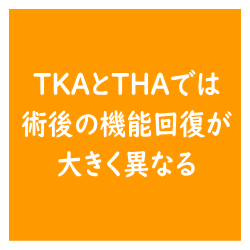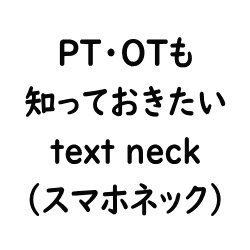目次
意外と知らないTHA後に起こる隠れた合併症
最近のTHAの1つのトピックスになっているのがTHAと尿失禁との関連性です.
まだあまり知らない理学療法士・作業療法士の方も多いと思いますが,THAの対象となる方が女性の中高齢者が多いことを考えると,知識としては必ずおさえておきたいところです.
今回はTHAの術式によってTHA後の尿失禁の有訴訟率が異なるといった論文を紹介させていただきます.
Eur J Orthop Surg Traumatol. 2014 Dec;24(8):1455-60. doi: 10.1007/s00590-014-1413-4. Epub 2014 Jan 10.
Is urinary incontinence the hidden secret complications after total hip arthroplasty?
Baba T1, Homma Y, Takazawa N, Kobayashi H, Matsumoto M, Aritomi K, Yuasa T, Kaneko K.
研究背景
We hypothesized that posterior approach (PA) dissecting the short external rotators and anterior approach (AA) not dissecting these have different influences on the pelvic floor muscles and subsequently affect urinary incontinence. The objective of this study was to investigate whether AA advantageously influences symptoms of urinary incontinence.
この研究ではTHAにおける後方アプローチは短外旋筋に侵襲が加わるので,短外旋筋に侵襲が加わらない前方アプローチに比較して骨盤底筋への影響が大きく,結果的に尿失禁の有訴訟率が異なるのではないかといった仮説を立てた上で研究を行っております.
この研究では前方アプローチが尿失禁症状に対して有益か否かを明らかにすることを目的としております.
対象と方法
The subjects were 76 female patients who underwent their primary total hip arthroplasty. The presence or absence of urinary incontinence before and after surgery was surveyed by a direct interview at the time of outpatient examination within a period from 1.5 year after surgery using the international consultation on incontinence questionnaire-short form.
対象は初回THA施行となった76例の女性となっております.
術前後で尿失禁の有無を調査しております.
調査方法ですが外来の際に,尿失禁質問紙を用いて術後1.5年が経過した男系で,直接インタビュー形式で尿失禁の有無を調査しております.
結果
Urinary incontinence improved after surgery in eight patients (22.2%), slightly improved in one (2.8%), remained unchanged in 26 (72.2%), slightly aggravated in one (2.8%) in the AA group. In the PA group, urinary incontinence improved after surgery in one (2.5%), remained unchanged in 30 (75%), slightly aggravated in four (10%), and aggravated in five (12.5%). Symptoms of urinary incontinence were significantly improved in the AA group and aggravated in the PA group (Mann-Whitney U test, P = 0.0057).
結果ですが前方アプローチでは22.2%が尿失禁の有訴訟率が改善しており,やや改善した例が2.8%,変化の無い例が72.2%,増悪した例が2.8%となっております.
一方で後方アプローチでは術後に尿失禁茸状に改善が得られたのはわずか2.5%であり,変化の無かった例が75%,増悪した例が22.5%でありました.
統計学的にも後方アプローチと前方アプローチの間における尿失禁症状の改善率に有意差がみられております.
結論
As the anatomical characteristic of the short external rotators, the root of the internal obturator muscle is connected to the levator ani muscle. Among the pelvic floor muscles, this levator ani muscle is closely involved in supporting the pelvic organs. Since the short external rotators may have been atrophied due to hip joint dysfunction before surgery, if the strength of this muscle group recovers, support of the pelvic organs and urinary incontinence may be improved. It was assumed that surgery through AA improved external rotation contracture of the hip joint and leg length, which increased tension of the internal obturator muscle, with which tension of the pelvic floor muscle also increased and improved urinary incontinence.
後方アプローチによるTHAでは短外旋筋を切離することが多いわけですが,短外旋筋の中でも内閉鎖筋は肛門挙筋との連結を持ちます.
骨盤底筋群の中でも肛門挙筋は内臓期の支持に密接に寄与しております.
変形性股関節症例では術前に短外旋筋が筋萎縮を起こしているわけですが,短外旋筋群に改善が得られれば肛門挙筋の機能にも改善が得られ骨盤底筋機能が向上し尿失禁症状にも改善が得られるものと考えられます.
前方アプローチではTHAによって股関節外旋拘縮や脚長にも改善が得られ,内閉鎖筋の筋張力が大きくなることで肛門挙筋の機能も連鎖的に向上し,尿失禁症状にも改善が得られるものと考えられます.
一方で後方アプローチの場合は内閉鎖筋そのものが切離されることが多いため,股関節機能には改善が得られても尿失禁症状が増悪する傾向にあるものと考えられます.
今回はTHAの術式によってTHA後の尿失禁の有訴訟率が異なるといった論文を紹介させていただきました.
脱臼率や術後の短期的なアウトカムが前方アプローチで後方アプローチに比較して良好であることが明らかにされておりますが,この結果から考えると尿失禁の改善といった面でも前方アプローチによるTHAが有益であると考えられます.







コメント